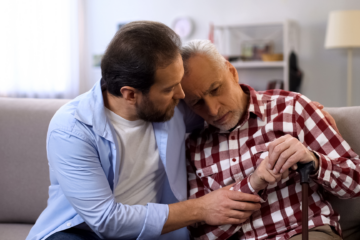Unlocking the Power of Active Living
As we age, staying active becomes increasingly important for maintaining overall health and well-being. Engaging in regular physical activity not only helps to keep the body strong and agile but also supports cognitive function and emotional welfare.
Importance of Being Active
Physical activity offers lots of benefits; from improving cardiovascular health and maintaining muscle strength to reducing the risk of chronic diseases such as heart disease, diabetes, and osteoporosis. Additionally, regular exercise can enhance mood, reduce stress and anxiety, and promote better sleep, leading to a higher quality of life..
There are plenty of enjoyable ways for you to stay active and maintain your fitness. Gentle exercises like walking, swimming, or tai chi can be fantastic options for improving strength, flexibility, and balance while being gentle on the joints. Many local community centres offer tailored exercise classes specifically designed for the older generations, including chair-based exercises or low-impact aerobics.
Gardening can be a wonderful way to get outdoors, engage in light physical activity, and enjoy the therapeutic benefits of nature. Even activities like dancing or joining a local walking group can provide opportunities for social interaction and fun while staying fit. With a variety of options available, staying active and healthy in later life can be both enjoyable and rewarding.
Activities You Can Do to Keep Active
Fitness Classes: Many community centres, gyms, and leisure centres offer fitness classes specifically designed for a gentler approach. These classes often include activities such as chair-based exercises, Pilates, yoga, and gentle aerobics, which cater to different fitness levels and abilities. Age UK offer a football activity and the chance to socialise while playing the beautiful game at a slower pace.
Dance Classes Dance classes are not only a fun way to stay active but also offer social interaction and cognitive benefits. There are various options available, including ballroom dancing, line dancing, and even dance fitness classes like Zumba Gold, which are specifically adapted for older adults.
Walking Groups Joining a walking group is a fantastic way to stay active while enjoying the outdoors and connecting with others. Many local councils and community organisations organise regular group walks in parks, nature reserves, and urban areas..
Swimming Sessions:
Swimming is a low-impact exercise that provides a full-body workout and is suitable for people of all ages. Many leisure centres offer dedicated swimming sessions for older adults, including aqua aerobics classes and relaxed lane swimming times.
Art and Craft Workshops: – Participating in art and craft workshops can stimulate creativity and provide a sense of accomplishment. Many community centres and art studios offer classes in painting, pottery, knitting, and other crafts, providing an opportunity for self-expression and socialising.
Gardening Clubs: Gardening is a rewarding activity that offers physical, mental, and emotional benefits. Joining a gardening club or allotment association provides opportunities to learn new skills, cultivate friendships, and enjoy the therapeutic benefits of spending time outdoors.
Social Clubs and Support Groups: Social clubs and support groups provide a valuable opportunity for older adults to connect with others who share similar interests and experiences. Whether it’s a book club, a knitting circle, or a discussion group, these gatherings foster a sense of belonging and companionship.
How a Carer can Help You Stay Active
You can choose to participate in these exercises independently or with a friend. Alternatively, if you have a carer, they are welcome to join you. Carers play a vital role in supporting your or your loved one’s exercise regimen and overall health, to learn more about finding the funding for a carer, read our previous blog here. This might entail joining you on walks, aiding with chair exercises to ensure correct form, and offering encouragement throughout.
Moreover, carers can facilitate a helpful exercise environment by eliminating barriers, arranging healthy snacks, and planning regular activity breaks. In addition to physical assistance, they provide emotional support, celebrating milestones, and offering motivation to stay active. By collaborating with carers, individuals and their loved ones can establish a sustainable exercise routine that promotes health, independence, and overall quality of life. You can learn more about live in care at this page



